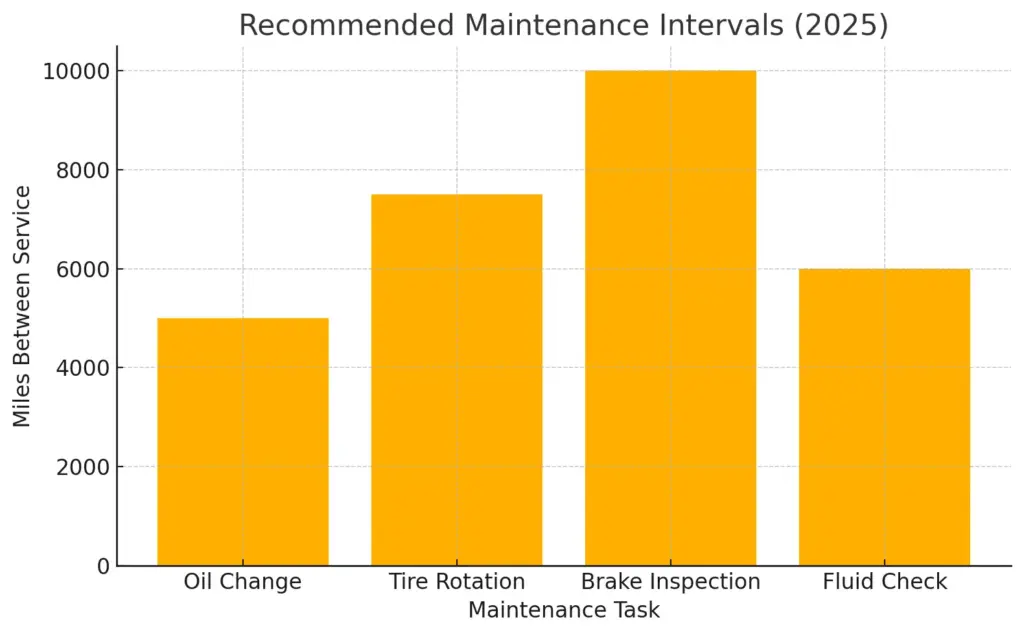Best Practices for Basic Maintenance and Car Reviews in 2025
Routine basic maintenance is the key to extending your vehicle’s life, ensuring safety, and optimizing performance. In 2025, advancements in automotive technology—like telematics, AI-driven diagnostics, and eco-friendly products—make it easier than ever for drivers to maintain their cars effectively.
Whether you’re a novice or an enthusiast on GetNew.blog, this comprehensive guide covers essential basic maintenance tasks, modern review methodologies, and practical tools to keep your vehicle running smoothly.
Table of Contents
- Introduction
- Why Basic Maintenance Matters in 2025
- Essential Basic Maintenance Tasks
- Advanced Basic Maintenance Considerations
- Tools and Equipment for DIY Basic Maintenance
- Creating a Personalized Maintenance Schedule
- Best Practices for Car Reviews
- Seasonal Basic Maintenance Checklists
- Common Myths and Misconceptions
- Choosing a Trustworthy Service Provider
- Cost-Saving Tips and Budgeting
- Future Trends in Vehicle Maintenance
- Conclusion
- Sources and Inspirations
Introduction
No matter how advanced our vehicles become, basic maintenance remains the backbone of reliable performance and safety. By 2025, smart diagnostics and eco-friendly solutions have revolutionized routine upkeep, but the core tasks—oil changes, tire rotations, brake checks—still demand attention.
This guide dives deep into each essential task, advanced methods, review best practices, and tools to help any driver maintain their car like a pro.
Why Basic Maintenance Matters in 2025
- Prevent Costly Repairs: Catching wear early—through regular oil and fluid checks—prevents major breakdowns and steep repair bills.
- Ensure Safety: Well-maintained brakes, tires, and lights are vital for accident prevention, especially with increasing traffic density and speeds.
- Optimize Performance: Fresh fluids and properly inflated tires improve fuel economy and response, which is crucial as emission standards tighten.
- Preserve Resale Value: A documented basic maintenance history boosts buyer confidence, leading to higher trade-in or resale values.
- Support New Technologies: Modern vehicles rely on software and sensor-driven systems that require calibrated maintenance for accuracy.

Essential Basic Maintenance Tasks
Oil and Filter Changes
- Why: Engine oil lubricates moving parts, removes contaminants, and regulates temperature.
- Interval: Approximately every 5,000 miles, though synthetic oils and AI-based alerts can extend this to 7,500–10,000 miles.
- Tip: Use high-quality, manufacturer-recommended oil and replace the oil filter each time.
Tire Care and Rotation
- Why: Even wear prolongs tire life and maintains handling balance.
- Interval: Rotate every 7,500 miles or at every other oil change.
- Pressure: Check tire pressure monthly, adjusting according to load and temperature.
- Tread Depth: Ensure a minimum of 2/32″; replace tires once tread depth dips below this.
Brake System Inspections
- Why: Worn pads or low fluid compromise stopping power and safety.
- Interval: Inspect every 10,000 miles or annually.
- Procedure: Check pad thickness, rotor condition, and fluid level/color.
- Visual Guide: ComponentCheckpointReplace WhenBrake PadsThickness < 3 mmImmediatelyRotorsWarping or scoringVisible grooves presentBrake FluidDark or low levelEvery 2 years
Fluid-Level Checks
- Engine Coolant: Prevents overheating; inspect level and coolant color every oil change.
- Transmission Fluid: Automatic: check for red, translucent fluid every 15,000 miles; Manual: different intervals—consult manual.
- Brake & Power Steering: Ensure clear, correct levels; replace if contaminated.
Filter Replacements
- Air Filter: Every 15,000–30,000 miles to maintain engine efficiency.
- Cabin Filter: Improves air quality; replace every 15,000 miles or yearly.
- Fuel Filter: Interval varies—check manual; typically recommended every 30,000 miles.
Battery and Electrical Health
- Inspection: Annually check battery voltage (should be 12.6V at rest) and terminals for corrosion.
- Replacement: Batteries typically last 3–5 years; replace when cranking voltage dips below 10V.
Belts, Hoses, and Underbody
- Belts (Serpentine, Timing): Inspect for cracks or fraying every 30,000 miles; replace timing belt at recommended interval (often 60,000–100,000 miles).
- Hoses: Check for softness, cracks, or bulges.
- Undercarriage: Look for fluid leaks, rust spots, and worn suspension components every service.
Advanced Basic Maintenance Considerations
Telematics and Predictive Diagnostics
Modern vehicles use sensors and cloud-based analytics to predict maintenance needs:
- Alerts & Notifications: Receive push alerts when oil quality drops or tire pressure deviates.
- Usage-Based Schedules: Maintenance intervals adapt based on driving style—city vs. highway—or harsh braking events.
Eco-Friendly Fluids and Parts
- Biodegradable Coolants: Reduce environmental impact if leaked.
- Low-VOC Oils: Improve air quality during service.
- Recycled Brake Pads: Meet performance standards while lowering waste.
Over-the-Air (OTA) Software Updates
- Why: Infotainment, ADAS, and engine management systems can be updated remotely, optimizing performance and safety features without a workshop visit.
- Tip: Verify that your vehicle’s brand supports OTA updates and install updates promptly.
Tools and Equipment for DIY Basic Maintenance
| Tool | Purpose |
|---|---|
| Socket & Wrench Set | Essential for oil changes and parts removal |
| Jack & Jack Stands | Safely lifts the vehicle for underbody work |
| Torque Wrench | Ensures bolts are tightened to spec |
| Tire Pressure Gauge | Accurate pressure readings |
| Multimeter | Electrical system troubleshooting |
| Fluid Catch Pan | Safely collects drained fluids |
| Filter Wrench | Eases oil and fuel filter removal |
| UV Leak Detection Kit | Finds A/C or coolant leaks |
Creating a Personalized Maintenance Schedule
- Consult Owner’s Manual: Start with OEM recommendations.
- Use Digital Logs: Apps like Carfax Car Care or manufacturer portals track services seamlessly.
- Set Calendar Alerts: Pair with mileage goals—e.g., 5,000-mile oil change reminders.
- Adjust for Conditions: In dusty or cold climates, increase filter change frequency and winterize fluids.
Best Practices for Car Reviews
Structuring Your Review
- Introduction: Model, year, and context.
- Performance: Engine feel, handling, fuel economy.
- Comfort & Design: Cabin quality, ergonomics, storage.
- Tech & Safety: Infotainment, ADAS features, crash ratings.
- Value Analysis: MSRP vs. out-the-door, resale outlook.
Hands-On Testing Methodology
- Diverse Conditions: City, highway, twisty roads, and a bit of light off-roading if applicable.
- Repeat Tests: Multiple runs for 0–60 mph, braking, and fuel-economy checks.
- Subjective & Objective: Combine measured data (times, MPG) with personal impressions (comfort, noise).
Effective Documentation and Scoring
- Photography & Video: Capture key angles, interior features, and driving footage.
- Scoring Matrix: Weight categories (e.g., performance 30%, comfort 25%, tech 20%, value 25%) for transparent ratings.
- Pros & Cons List: Summarize strengths and weaknesses clearly at the top or bottom of your review.
Seasonal Basic Maintenance Checklists
| Season | Key Tasks |
|---|---|
| Spring | A/C check, coolant flush, tire alignment |
| Summer | Battery load test, coolant reservoir level, wiper blades |
| Autumn | Brake inspection, heating system test, underbody wash |
| Winter | Antifreeze check, winter tires, door seal lubrication |
Common Myths and Misconceptions
- “You Must Change Oil Every 3,000 Miles”
Modern synthetics extend intervals to 5,000–10,000 miles. - “Higher Octane Always Improves Performance”
Use the octane rating recommended by the manufacturer; higher isn’t always better. - “All Tires Are the Same”
Seasonal and performance tires vary widely in compounds and tread patterns.
Choosing a Trustworthy Service Provider
- Certifications: Look for ASE-certified technicians.
- Transparency: Quality shops provide digital invoices with part numbers and service details.
- Warranty: Opt for shops offering labor warranties (e.g., 12 months/12,000 miles).
- Reviews & Referrals: Check online ratings and ask fellow enthusiasts in automotive forums.
Cost-Saving Tips and Budgeting
- Bulk-Purchase Fluids: Buy oil and filters in multipacks for discounts.
- DIY Where Safe: Change air filters, cabin filters, and wiper blades yourself.
- Loyalty Programs: Many chains offer membership discounts on routine services.
- Preventative Care: Spending on small services prevents large repair bills later.
Future Trends in Vehicle Maintenance
- Predictive AI Diagnostics: Cars will predict failures before they occur, scheduling service reminders.
- 3D-Printed Parts: On-demand production of rare parts for older models.
- Augmented Reality (AR) Repair Guides: AR glasses guiding DIYers through repairs step-by-step.
- Sustainable Service Centers: Solar-powered shops using recycled water and eco-friendly products.
Conclusion
Staying on top of basic maintenance in 2025 combines timeless practices—like oil changes and brake checks—with cutting-edge tools such as telematics and OTA updates. By following this guide, you’ll enhance safety, performance, and value while mastering modern car review techniques.
Embrace the digital tools, preventative strategies, and eco-friendly options to keep your vehicle in prime condition.
For more in-depth tutorials, tool reviews, and the latest automotive insights, visit GetNew.blog and become part of our community of car enthusiasts.
Sources and Inspirations
This guide draws inspiration from manufacturer service manuals, industry leaders like the American Automobile Association (AAA), Car and Driver, and emerging research from telematics and automotive tech publications.
These sources ensure you get accurate, up-to-date information for your basic maintenance and car review endeavors.
